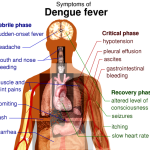
Hantaviruses are members of the bunyavirus group, which is the largest family of viruses and contains several human pathogens including California encephalitis virus (see site). The hantavirus group was first recognized as causing hemorrhagic fevers with renal failure in Asia and Eastern Europe but became much more prominent in the United States when the hantavirus pulmonary syndrome was described in the United States. Hantaviruses have been found throughout the world in a variety of rodents and other species.









